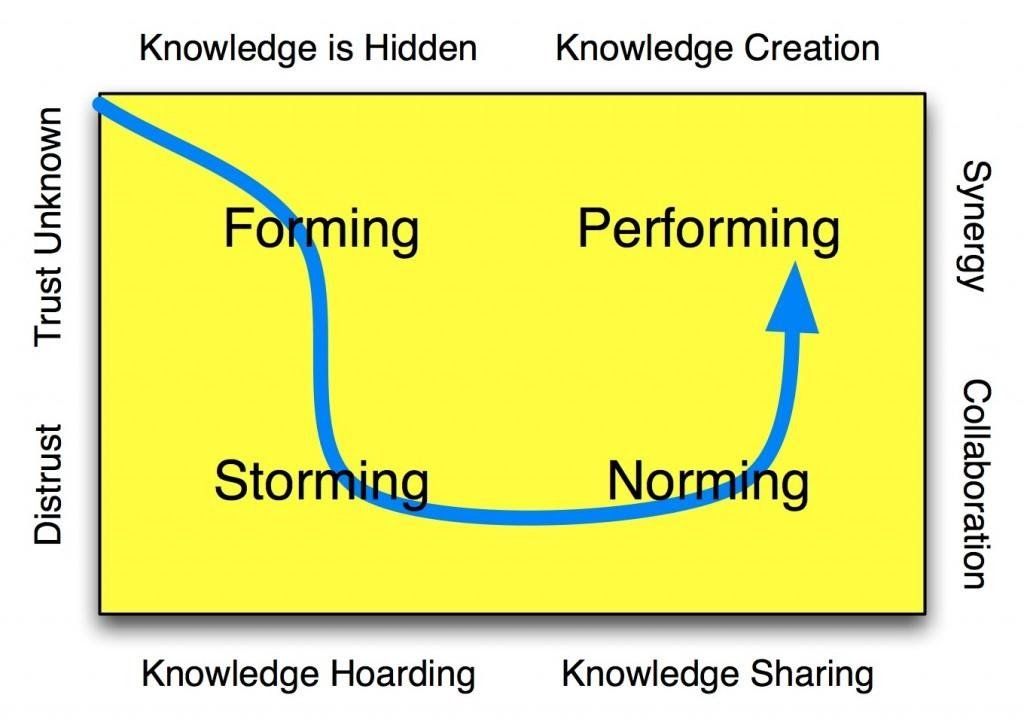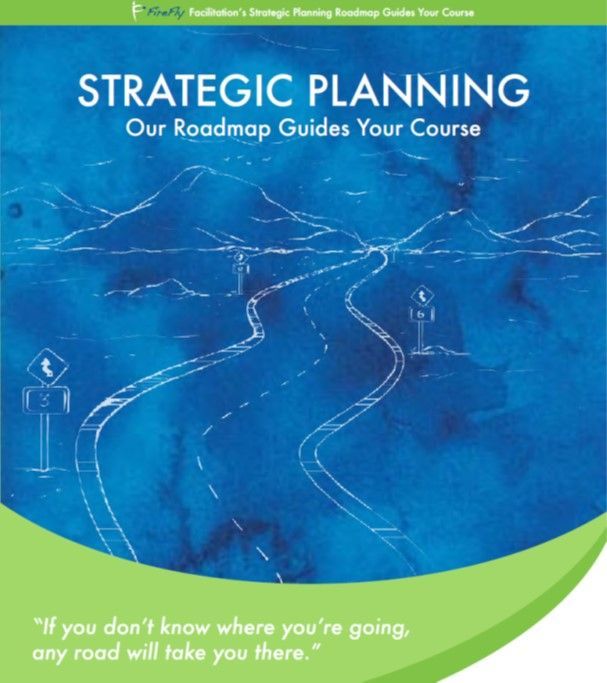4 Key Stages of Team Development Leading to High-Performance Teams
What makes great teams so successful? Is it the individual? A charismatic team leader?
The answer: it's each individual contributing their unique strengths and skill sets to achieve positive outcomes for their team and ultimately the overall organization. At least this is the goal of any sensible team development process.
Having worked with hundreds of teams over the past 25+ years and with a master’s in industrial/organizational psychology, I'm very familiar with Dr. Bruce Tuckman's 4 Stages of Team Development. His model, developed in 1965 and widely recognized by businesses and organizational psychologists alike, describes the phases in which teams typically progress from formation, hardship, development, to the desired end state of high-performance execution.
The 4 Stages of the model consist of
Forming, Storming, Norming and Performing. As you can see from the graphic below, at each stage the team experiences changes in level of trust, knowledge sharing, and ultimately their level of cohesiveness and effectiveness. Read on for my quick tips for getting your team started on the right foot (Forming), navigating those challenging waters (Storming), and enhancing your team’s “psychological safety” for full team synergy (Norming).
Stage 1: Forming
The Forming stage is the period of social orientation where team members initially get acquainted with each other. Uncertainty is high at this stage. Team members may be asking such questions as "What does the team offer me?" "What is expected of me?" “Will I fit in?” The principal objective for this stage is for the team to create a clear structure, direction, and roles, like who the team leader may be, so that members begin to build trust. My tips for this stage:
- Use the Herrmann Brain Dominance (HBDI) to understand how each other prefers to think and communicate. I have used this assessment with teams for over 20 years. People learn their own and each other's strengths and blind spots; how they change their behavior under pressure; potential sources of conflict; and how to use "creative abrasion" to capitalize on the diversity of thought on the team.
- Redesign the team staff meeting for greater impact. It is very important that when the team comes together, great things get accomplished. Unfortunately, many staff meetings are not living up to their full potential. I often ask the team to first share their perspective on the purpose of their staff meeting. We then use a "Whole Brain® Thinking" approach (based on the HBDI) to redesign the staff meeting to fulfill that purpose and to ensure all team members’ expectations are being met.
- Clarify each member's role and contribution. Great teams are clear about what constitutes success and how each member contributes to that success. Building on the knowledge from the HBDI, we will explore what each team member does best and how to leverage that to ensure the team achieves its goals.
Stage 2: Storming
The Storming stage is the most critical and challenging stage to pass through. As the team begins to move towards its goals, members may encounter unprecedented conflict and competition as individual personalities more fully emerge. The team discovers that they can't live up to their early excitement and expectations. Frustrations and unproductivity brought on by disagreements surrounding team goals may emerge as well as the formation of subgroups and cliques around areas of agreement. My tips to help in this stage:
- Assess the current situation. Don't rely on your own perspective; get a broader view of the situation. Have someone external to the team conduct confidential interviews of the team members and other key stakeholders. Ask questions about the current team dynamics, critical business challenges facing the team in the coming months, and expectations for what needs to be accomplished during the next few team meetings.
- Bring the team together for a one-day meeting with a clear purpose. Use what you learned in the interviews to design an impactful agenda. My experience is that people are more engaged when they see "their fingerprints" on the agenda.
- Monitor progress and hold people accountable. It's true - what gets measured gets done. At each staff meeting, follow-up on the status of commitments and decisions made at the offsite. The greater the clarity of commitments, the greater the likelihood you will be able to hold each other accountable.
Stage 3: Norming
The Norming stage is when teams begin to develop close relationships, and the group demonstrates cohesiveness. With a better grasp of shared goals and solidified group structure, members will feel a more profound sense of camaraderie and shared responsibility for the project.
Getting over issues and discrepancies in individual expectations and the reality of the team's experience from stage two allows members an increased sense of comfort in expressing their "real" ideas and feelings. The team may find that this is an appropriate time for genuine evaluation of team processes and productivity without risk of social ridicule. My tip for stage 3:
- Now is a good time to address the topic of psychological safety if your organization has not already. In Amy Edmondson’s highly-acclaimed book, The Fearless Organization, she makes a clear case for why every organization today competes on knowledge and creativity. Innovation demands a climate of psychological safety, which she defines as employees...
- Feeling comfortable sharing concerns and mistakes without fear of embarrassment or retribution.
- Knowing they can ask questions when they are unsure about something.
- Trusting and respecting their colleagues.
- To read more on this topic, we invite you to read our 2 newsletters:
- “Does your team have "Psychological Safety"?
- “How do I build "Psychological Safety" on my team?
Stage 4: Performing
And now you know the secret to high performing teams. The four team development stages we mapped out provide the perfect framework to achieving high performing teams.
Let’s recap: In the
Performing stage of team development, consensus and cooperation have been well-established, and the team resembles a mature, organized, and well-functioning machine. With a clear and stable structure, members can fully commit to the team’s objectives and constructively address problems and conflicts when they arise.
With deeper insight into personal and group processes, members can recognize strengths and weaknesses amongst individuals and within themselves. This understanding heightens overall productivity and satisfaction in the team's results.
Remember, over time as new team members join and others leave, this 4-stage cycle starts all over again. This is especially true in our current hybrid work environment – exacerbated by the turnover tsunami that is on the horizon.
Click here for our compilation of the research and guidance on preparing for the hybrid workplace…and
click here to assess whether you are ready the tsunami ahead.
To ensure a new foundation of trust and inclusion is built across the team, new members should complete the HBDI as soon as they join. The team can then gather to review and discuss the collective HBDI results and the implications – i.e. the new strengths added and what might have been lost with any departing team members.
Improve Team Performance with FireFly Facilitation
Effective team development enhances collaboration, productivity, and motivation amongst individuals. While this work can be accomplished through ongoing, focused effort by the team leader, our experience shows that having an expert facilitator external to the team can be incredibly valuable for guiding your organization through the 4 stages.
Kimberly Douglas, FireFly Facilitation Inc. CEO/Founder, has more than 25+ years of experience jumpstarting and sustaining the effectiveness of teams at all levels of the organization and across a wide array of industries. In addition, she also has in-depth experience with
strategic/operational planning for teams and entire organizations. To capitalize on FireFly Facilitation’s professional team development services and innovative techniques,
contact FireFly Facilitation and start developing your high-performance team today.






